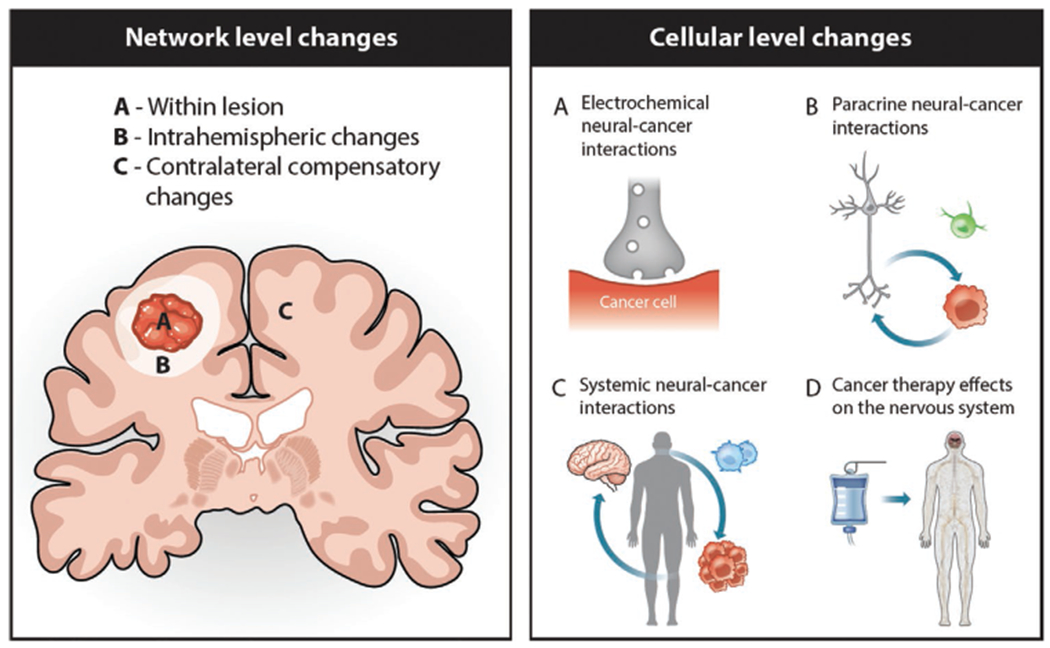Figure 2.

Schematic representation of the network and cellular-level mechanisms underlying glioma-induced cerebral reorganization. Left panel demonstrates a hierarchical model of functional compensation in the setting of diffuse glioma wherein compensation initially utilizes eloquent neural networks which remain intact within the tumor A) or in the peritumoral area B) before the recruitment of the unaffected contralateral hemisphere C). Right panel A, B) illustrates interaction between nervous system (gray) and cancer cells (red) and neuron-glioma communication as a key cellular mechanism underlying glioma-induced cortical neuroplasticity. C) In addition to the direct neuron-cancer interaction, nervous system also influences immune responses and promotes tumor growth and progression via expression of cytokines and tumor-associated immune cells (blue) in the tumor microenvironment. D) Chemotherapy or radiotherapy may also have significant toxic effect on the nervous system and the extent to which therapy-induced neuropathy may modulate nerve-cancer interaction and glioma growth needs to be investigated.
